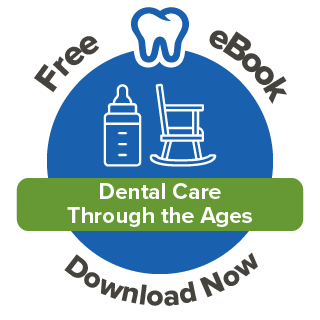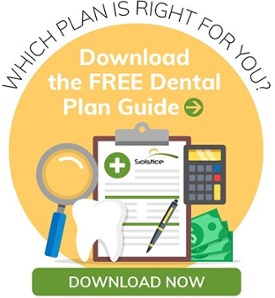By Tim Fitzgerald on Dec 7, 2020 @ 05:09 PM
So, you’re thinking about braces. Whether you are a parent looking for your child or an adult/young adult looking to straighten your smile, there is a lot to consider before you start orthodontic treatment (aka braces). From the basics of braces to cost, and what happens after your braces are off - here is everything you need to know about orthodontics!
What is Orthodontia?
Orthodontia, or orthodontics, is the dental specialty that deals with spacing and bite abnormalities in your mouth and jaw. The dentist who specializes in orthodontics is called an Orthodontist. Common orthodontic treatment includes using devices like braces to correct issues such as crooked teeth, overbites/underbites, and gaps between teeth. Orthodontics is often thought of as a treatment for kids and teenagers, but many adults need orthodontic treatment too.
How do Braces Work?
Classic braces consist of four primary parts – brackets, bonding material, bands, and wires. Each of these plays a key role in correcting your teeth. Here is a quick rundown on each piece:
- Brackets are the metal pieces that attach to the front of your tooth. They act as the ‘anchor’ between your teeth and the other parts of the braces.
- Bonding material is the substance used to ‘glue’ the brackets securely to your teeth.
- Wires, also known as arch-wires because of their arcing shape, put pressure on the brackets and your teeth to encourage them to move in the ways they need to. Because of this, there are a lot of different kinds of wires, and you’ll have them adjusted often to get your teeth in just the right place.
- Bands, also known as elastic O-rings, secure the wires to your brackets. They are generally considered the fun part of braces since they come in different colors to mix and match.
Classic braces aren’t your only option though. There are other kinds of braces as well, that depending on your circumstances, can be a better option. They include:
- Ceramic Braces are like classic braces, except the brackets are ceramic, coming in either clear or natural colors to make them less visible on the front of the teeth. They have some downsides though – mainly that they cost more than classic braces and can impact your dental hygiene routine due to larger bracket sizes.
- Lingual Braces are similar to classic braces, but they are mounted on the back of the teeth so they can’t be seen. They are generally considered to be more effective than invisible aligners, but they have some distinct drawbacks. Particularly, they are generally more expensive than ceramic or classic braces and can cause more discomfort and create lisp issues since the brackets are up against your tongue.
- Invisible Aligners aren’t braces. Instead, they are plastic trays built based on molds of your teeth to realign your smile. The clear plastic trays are tight-fitting and can be easily removed when you eat or drink. Common brands of invisible aligners include Invisalign, ClearCorrect, and Smart Moves. Like every other type of braces though, there are some disadvantages. Invisible aligners are one of the more expensive options for braces, and because they are removable, you can negatively impact your treatment outcome by forgetting to put them back in after a meal or brushing your teeth.
Braces Cost
One of the biggest concerns when it comes to seeking out orthodontic care is the cost. Braces are expensive, no matter what you do. But understanding the cost of braces and the ways you can save money can go a long way. Here’s what you need to know:
- Know the Cost Difference Between the Types of Braces: Each type of treatment has a different cost associated with it.
- Conventional braces generally cost between $3,000 and $7,000
- Invisible aligners often cost between $3,000 and $8,000
- Ceramic braces can cost between $4000 and $8,500
- Lingual Braces cost somewhere between $5000 and $13,000
- Know Your Area’s Average Costs: As you can see by the above cost ranges, there is a lot of variation in braces costs – and part of this is dependent on your area. Different states and metropolitan areas have different average costs for orthodontic treatment. So, finding out the average cost in your area can help you get a more accurate picture of what treatment will cost. The best way to do this is to consult with a few orthodontists in your area or look online for what people report paying in your area!
- Make Sure Your Dental Insurance Covers Orthodontia: Just like health insurance, not all dental insurance is created equal. Make sure your plan covers orthodontic treatment, specifically the kind of braces or aligners you want to use. If you don’t have dental coverage, contact a Solstice team member here and we can get you set up on a plan today!
- Think about Further Mitigating Cost With a Dental Discount Plan: Whether you have insurance or not, you can save a lot of money by adding a discount dental plan. Discount dental plans give you access to networks of Orthodontists who have agreed to set discounts on their services. These plans are not dental insurance and can be used alongside your insurance benefits to save you even more money. For example, with a Solstice discount plan, you can get 25% off all your orthodontic services. We’ll even give you a free month when you sign up!
Braces Hygiene
A big component of successful orthodontic treatment is your oral hygiene. Braces make it inherently more difficult to brush and floss your teeth since they take up surface area on your teeth. This means you have to be committed to spending more time brushing and flossing, and make sure your time taking care of your teeth is effective! When it comes to braces, there are three pieces to the hygiene puzzle:
- Have the Right Tools: Having the right toothbrush and floss can make brushing with braces a lot easier. Pick a toothbrush that allows you to brush around your brackets and wires effectively and comfortably. And look into flat dental flossers, which can make flossing around wires easy – saving you a lot of headaches.
- Brush Consistently: Forgetting to brush when you have braces is your biggest enemy. Because your teeth are shifting, your gums will be more irritated, and thanks to the brackets and wires, food and plaque buildup is a lot easier. Consider bumping your brushing up to three times a day, and don’t miss a flossing session either!
- Get Regular Cleanings: It’s important to stay regular with your normal dental visits while you are in braces too. Cleanings and exams are just as, if not more, important during this time to prevent cavities and decay that can interfere with your braces.
- Getting Your Braces Off: Getting your braces on means that eventually you will get them off too. But getting your braces off does not mean your orthodontic care is over. You’ll still need to continue seeing your Orthodontist regularly to make sure your teeth aren’t shifting back out of place and that nothing comes up (like wisdom teeth) to reverse the progress your braces made. And you’ll need to be fitted and wear a retainer.
- Retainers: Retainers are probably everyone’s least favorite part of getting their braces off. Your retainer is a device, either removable or fixed, that you put in your mouth to keep your teeth in the correct alignment. If you don’t wear your retainer, your teeth will move out of alignment – and you might need to go back into braces to fix it. So make sure you talk with your Orthodontist and determine the type of retainer that’s most convenient for you.
Braces can be intimidating, and there is a lot to learn. But they aren’t as foreign as they seem, and they can do wonders for your smile. Just be sure to do your research and talk with your Orthodontist – they are there to help you every step along the way. And if you want to save money on your orthodontic care, click the image below to sign up for a Solstice dental insurance plan or discount plan today!
Want to have Solstice benefits?
Call our sales team at 877.760.2247 or email Sales@SolsticeBenefits.com
Already have Solstice benefits?
See your plan details by going to https://www.mysmile365.com/ or calling us at 1.877.760.2247.





comments